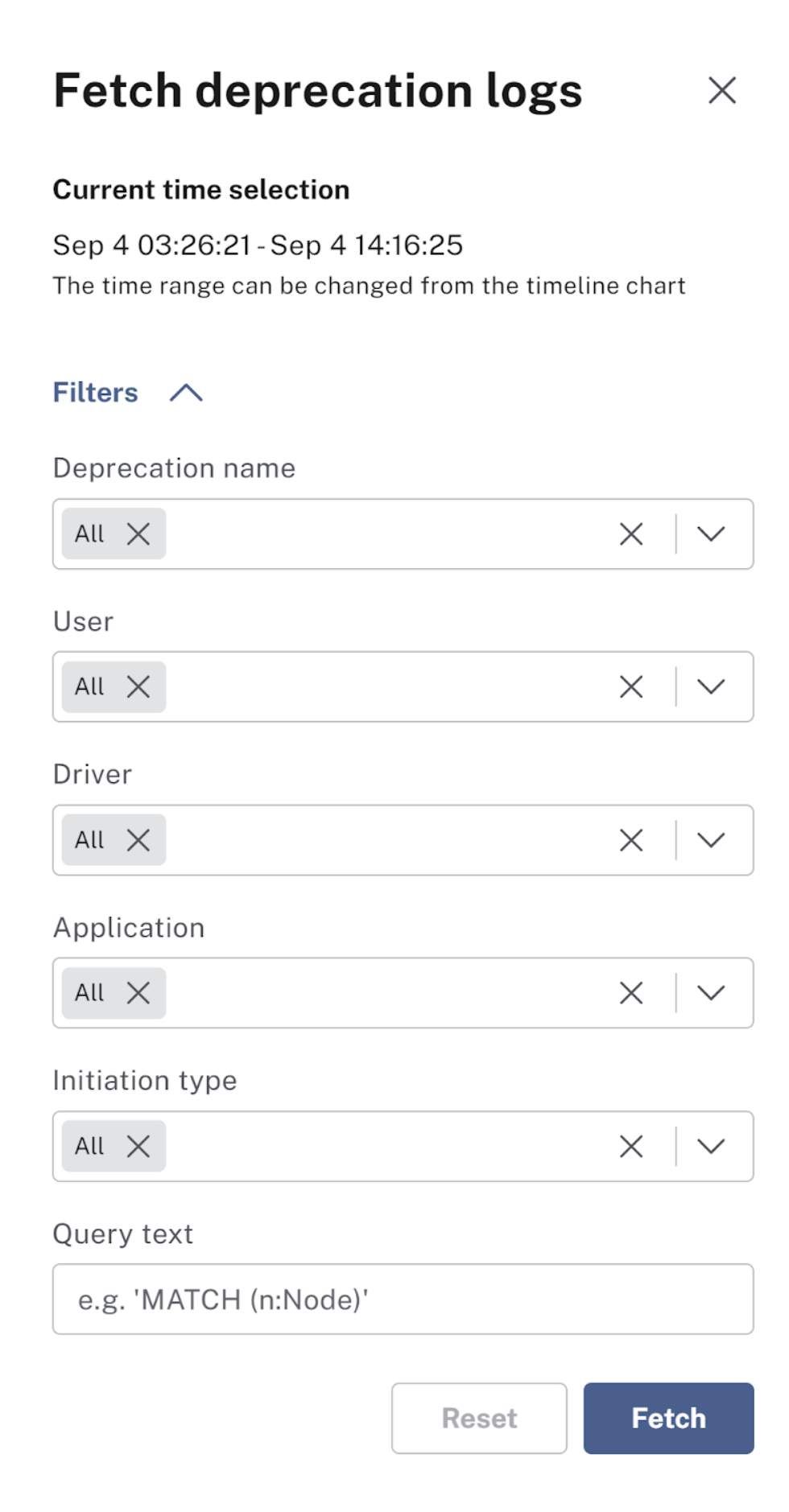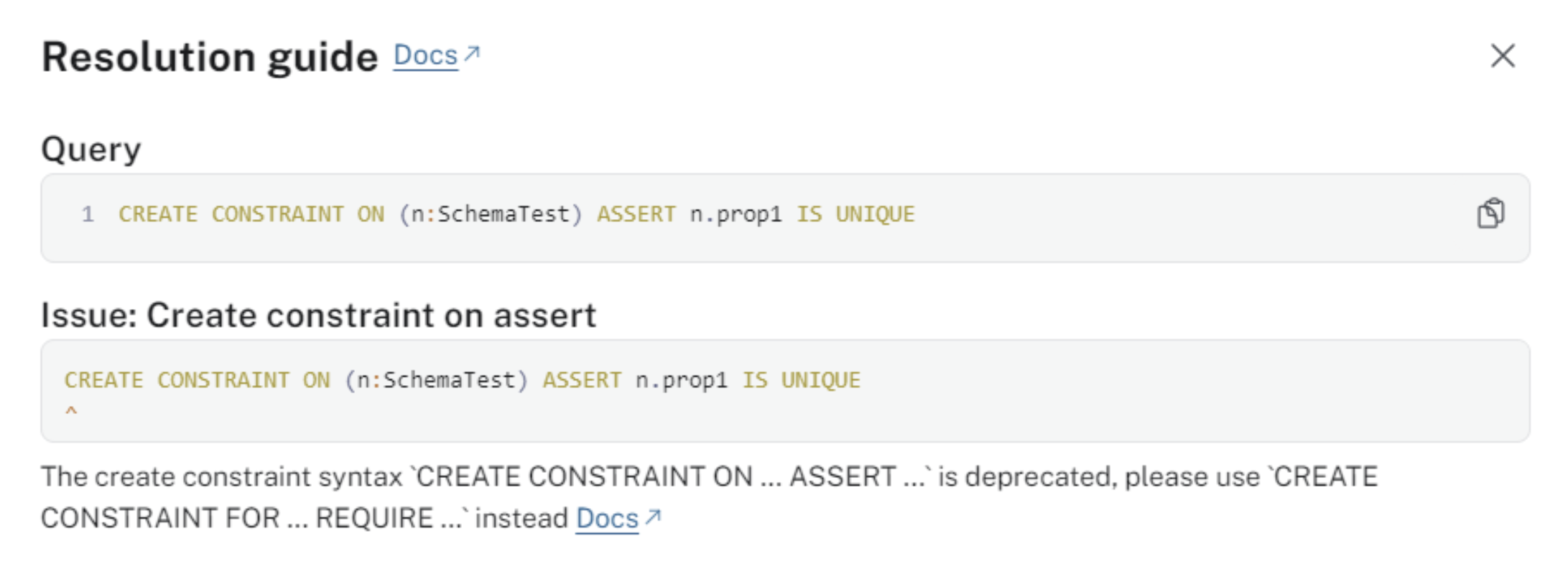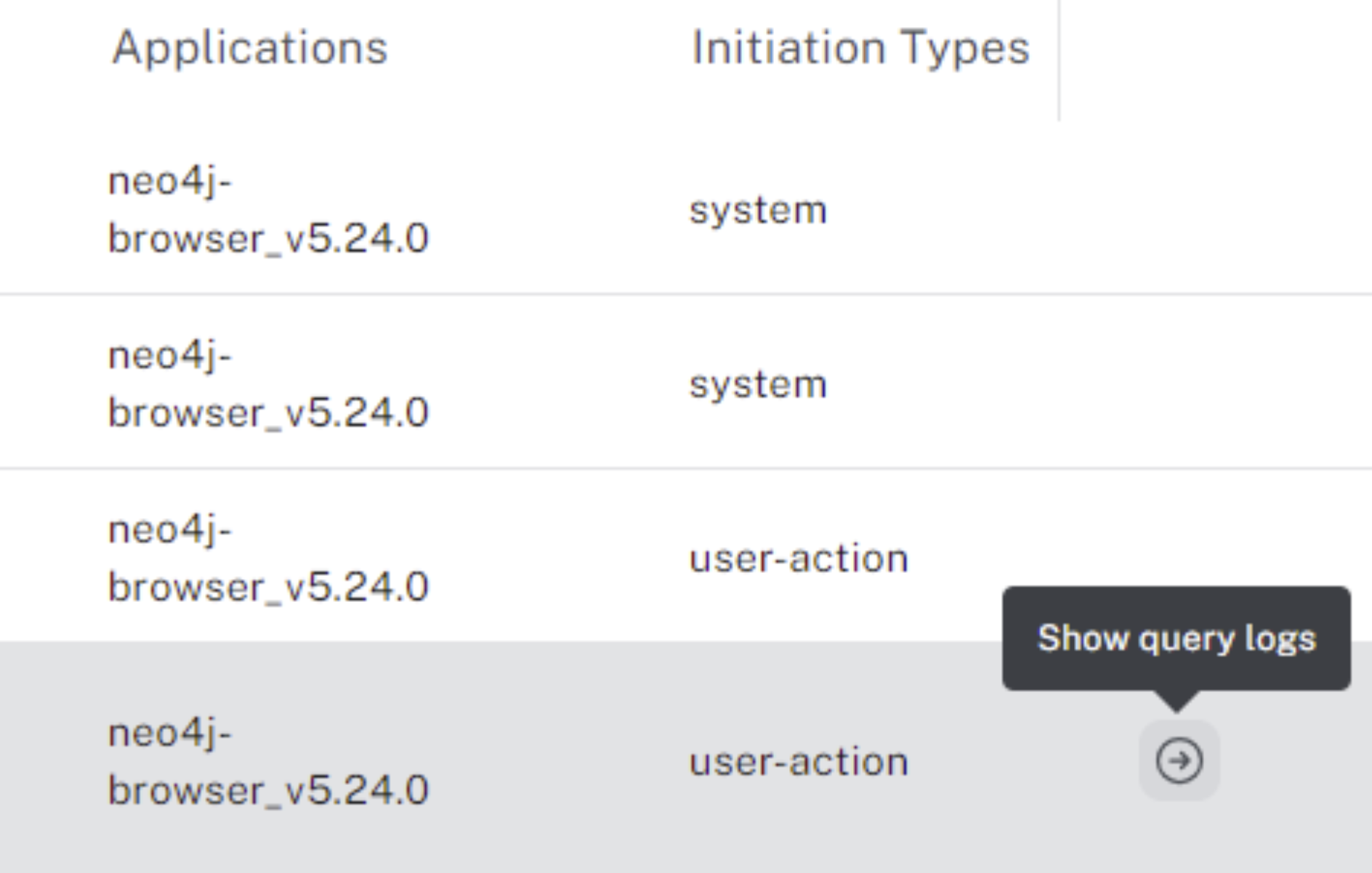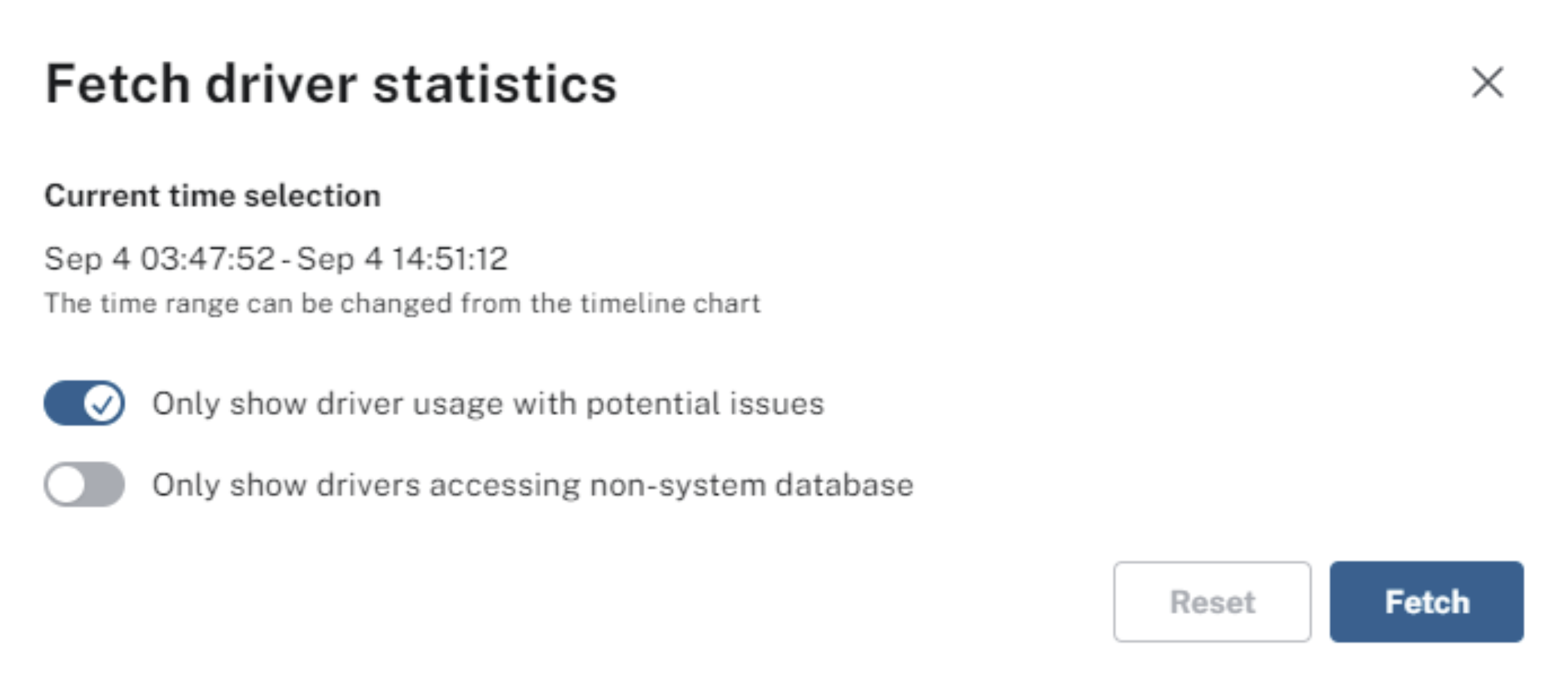Migration Readiness Report
|
The Migration Readiness Report is only available for Instances on Neo4j version 4. You can access the report for any version 4 instance via the link through the "Migration recommended" label on the Instance and Console pages. |
Overview
This tool advises how to prepare an AuraDB v4 instance for migration to AuraDB v5. It reports current application queries, drivers, and database objects that would prevent you from migrating to AuraDB v5 by providing information based on your recent usage history. In addition, you can also see Upgrade to Neo4j 5 within Aura for details on each identified issue and how to address it.
The main categories of issues that the Migration Readiness Report deals with are:
-
Cypher deprecations
-
Deprecated driver usage
-
Deprecated index types
The report page has a section for each category and a chart at the top titled "Deprecations and query timeline." This document explains each section, but the first is vital to controlling the others and is detailed in the following section.
Note that the report only highlights issues that need to be addressed to make your code and queries compatible with AuraDB v5. Working on these issues presents a good opportunity to learn more about the advantages of the new features in version 5.
Control over the time window

In the "Deprecations and query timeline" section, you will see a chart displaying the usage of deprecated Cypher features and constructs and a general measure of query load on that system (query rate). You can disable and enable the data series by clicking on the legend. This can be helpful if you want to focus on something specific temporarily. The time frame can be controlled in two ways:
-
Zoom in by clicking on the chart area (start time) and drag while holding the mouse button down until the end time you want to select. The chart then zooms into the desired time frame.
-
Use the time selector in the top right corner of the chart. The chart updates with the desired time frame. The maximum time frame is 7 days of history.
To get back to the time range that was previously selected, double-click the chart area. Be aware that while the chart can display up to 7 days, the details for Cypher deprecations and deprecated driver usage can be retrieved for a maximum time range of 24 hours.
Cypher deprecations

After selecting a time frame of a maximum of 24 hours, use the button to fetch the deprecations logs in this section. Setting filters in the following popup window is optional but helpful if you want to see only specific entries. You can filter on:
-
Name of the deprecation
-
The user that executed the query
-
Driver that was used to execute the query
-
The application name that executed the query (if set)
-
The initiation type of the query
-
The query text or parts of it
Use the button in the popup to fetch applicable data to populate the report’s table.

Each row in the table represents a query in the selected timeframe that must be changed to seamlessly migrate to the latest Aura version. You have to rewrite those queries to only use v5 supported Cypher.
All executions of the same query are aggregated into one row (see also the "Count" column). Use the magnifying glass at the start of each row to access a popup with more information about the query and suggestions on dealing with each issue. It also provides relevant links to the documentation for each deprecation.

The last column in the table of Cypher deprecations links to a view of this specific query in the Aura Query Log Analyzer tool, which can provide information on each execution of the selected query.
The tool can view queries on all databases except the system database.

Deprecated driver usage

After selecting a time frame of a maximum of 24 hours, use the button to fetch the driver statistics in this section. By default, the filters in the popup are set to show only driver usage with potential issues in any database, including the system database. You can change those freely to see all driver usage, for example.
Use the button in the popup to fetch applicable data to populate the report’s table. Depending on the type of client accessing the Neo4j database, links are provided in the column “Latest version” to help with the upgrade.

Like the Cypher deprecations table, the last column links to a view of this specific driver’s executed queries in the Aura Query Log tool.
The tool can provide information on each query execution in which the selected driver was used.
The tool can view queries on all databases except the system database.
Deprecated index types
This section provides information on how to deal with deprecated indexes that may be used in version 4 but need to be handled before or while moving to version 5.
This part involves manually running a provided Cypher query on your database to identify the deprecated indexes and then deciding how to best deal with them. Further enhancements to this feature will be provided in the future.